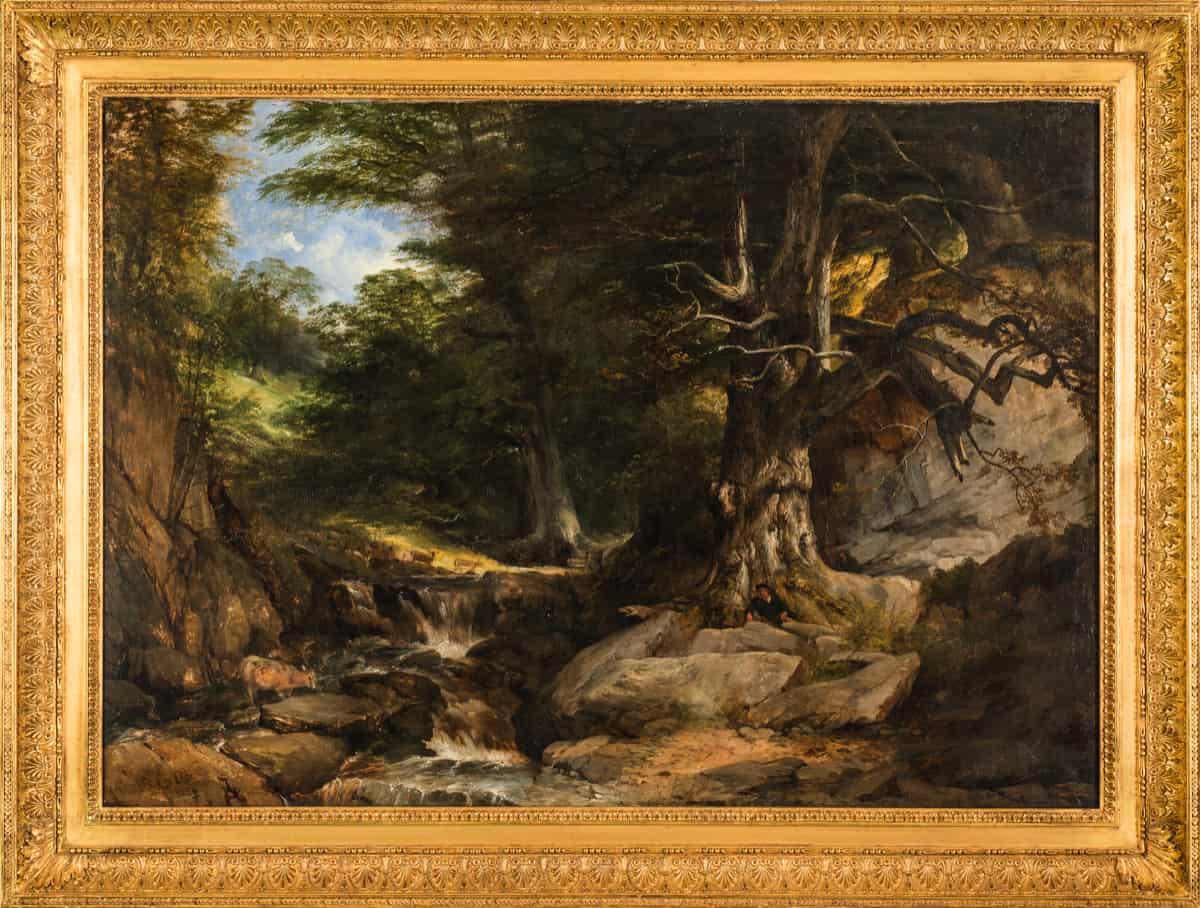- “Jacques and the Stag” was painted for Isambard Kingdom Brunel by the English landscape artist Frederick Richard Lee.
- Painted in 1850, the oil on canvas painting shows a scene from the Shakespeare play “As You Like It”. It was one of 10 Shakespeare inspired paintings Brunel had specially made to hang in his house in London.
- The nearly 1.5m wide painting shows a wounded stag in a woodland with Jacques, a character in the play, looking at it from a distance.
- It is now part of the SS Great Britain collection and hangs in a recreation of Brunel’s dining room in the Being Brunel Museum at Brunel’s SS Great Britain.
The Story
Celebrating the Arts
In his home at 17 and 18 Duke Street, London, Brunel created a highly decorated dining room for him and his wife Mary to entertain family, friends and important people. It was known as the Shakespeare Room because nine paintings showing scenes from Shakespeare’s plays decorated the walls. These paintings included Jacques and the Stag, alongside ones showing scenes from Romeo and Juliet, Macbeth, and King Lear. Another Shakespeare inspired painting hung in their drawing room.
Brunel was a fan of Shakespeare’s plays so wanted to commission artists who would celebrate the playwright and represent some of the best British artists at the time. His chosen artists were invited to join him for dinner on 18 December 1847 to discuss the project; it was the first of several meetings between Brunel and his artists. They were allowed to choose the subject for their painting as long as it showed a scene from a popular Shakespearian play. The group met again in January 1848 where they discussed their ideas for their paintings. At a third dinner meeting Brunel looked over rough sketches to make sure that all the pictures worked well together and would suit his dining room. The paintings were completed over the next few years with the last, showing a character from The Winter’s Tale, finished in 1856. The paintings help to show Brunel in a different light, as a man with a keen interest in the arts, and not just engineering.




